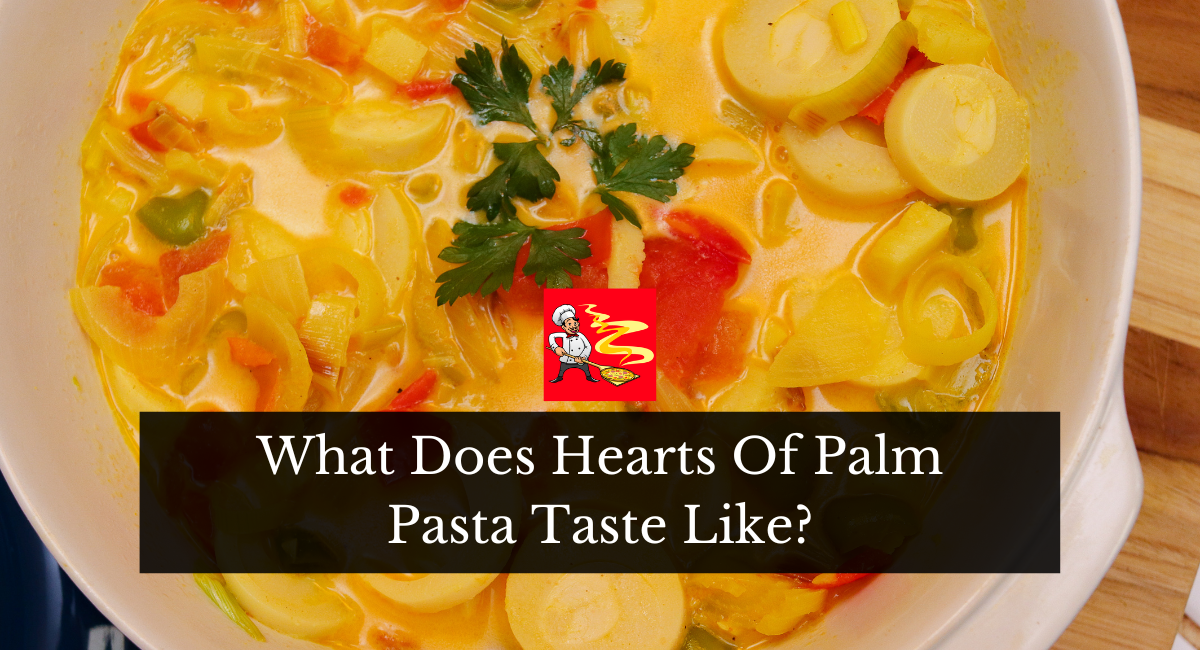In the ever-evolving world of culinary alternatives, hearts of palm pasta have emerged as a popular choice for those seeking a low-carb, gluten-free substitute for traditional pasta.
Made from the tender core of the palm tree, this unique pasta alternative has piqued the curiosity of many. But what does Hearts of Palm pasta taste like?
This article dives into the flavor profile and texture of hearts of palm pasta, offering insights for those eager to explore this intriguing option.
What Does Hearts Of Palm Pasta Taste Like?
Hearts of palm pasta, often marketed as “palmini pasta,” is a gluten-free alternative to traditional pasta made from the inner core of certain palm trees. As more people seek out low-carb and grain-free alternatives, hearts of palm pasta have gained popularity. But what does it taste like?
1. Flavor Profile
Hearts of Palm pasta has a mild, slightly nutty, and subtly earthy flavor. It doesn’t have the strong taste of some other vegetable-based pasta alternatives, making it a more neutral option.
2. Texture
When it comes to texture, hearts of palm pasta are slightly crunchy when raw. However, once cooked, it softens and takes on a texture somewhat similar to al dente traditional pasta. It won’t have the exact same chewiness as wheat pasta, but it offers a pleasant bite.
3. Comparison to Other Alternatives
Unlike zucchini noodles (zoodles), which can be watery, or spaghetti squash, which has a distinct squash flavor, hearts of palm pasta hold its shape well and have a more neutral taste. This makes it versatile for various sauces and preparations.
4. Preparation Influence
The taste can be influenced by how it’s prepared. Rinsing the pasta can help remove any residual brine or canning liquid, which might impart a slightly tangy or metallic taste. Cooking it briefly in boiling water or sautéing in a pan can further soften its texture and make it more pasta-like.
5. Sauce Pairing
Due to its mild flavor, hearts of palm pasta pairs well with a variety of sauces, from rich and creamy Alfredo to tangy marinara or pesto. The pasta takes on the flavor of whatever it’s paired with, making it a versatile option for many dishes.
Tips:
- Rinse Thoroughly: Before using, it’s a good idea to rinse the pasta thoroughly to remove any canning liquid or brine, which can influence its taste.
- Brief Cooking: Overcooking can make it too soft. A brief boil or sauté is usually enough to achieve the desired texture.
- Seasoning: Just like traditional pasta, seasoning is key. Don’t forget to season your cooking water or add flavors to enhance the dish.
Does Hearts Of Palm Pasta Taste Like Regular Pasta?
Hearts of palm pasta, often used as a low-carb and gluten-free alternative to regular pasta, has a different taste and texture. It doesn’t taste exactly like traditional pasta made from wheat flour but has a mild, neutral flavor.
The texture is slightly crunchier and less chewy compared to wheat pasta. Its appeal lies in being a versatile canvas for various sauces and flavors. While it may not be an identical replacement, it’s enjoyed by those looking for a pasta alternative that’s lower in carbs and calories.
What Is The Texture Of Hearts Of Palm Pasta?
The texture of hearts of palm pasta is unique and distinct from traditional wheat-based pasta. It has a slightly crunchy and firm texture, more akin to al dente vegetables. Hearts of palm pasta holds its shape well when cooked and can be somewhat less pliable and chewy compared to regular pasta.
This texture can be enjoyable for those seeking a different pasta experience, especially if they prefer a lower-carb or gluten-free option.
Can You Eat Hearts Of Palm Pasta Raw?
Yes, you can eat hearts of palm pasta raw. Hearts of Palm Pasta is typically sold in a pre-cooked and ready-to-eat form, so it can be consumed without further cooking. However, many people choose to briefly heat or sauté it to achieve a texture more similar to traditional pasta or to combine it with warm sauces.
Eating it raw is an option, especially in cold pasta salads or as a base for fresh, uncooked sauces like pesto.
Bottom Line
Hearts of Palm pasta, with its slightly nutty and subtly earthy flavor, offers a taste that’s distinct yet mild enough to adapt to a variety of sauces and toppings. Its texture, while not an exact replica of traditional pasta, provides a satisfying bite that’s reminiscent of al dente noodles.
For those seeking a healthier or grain-free alternative without compromising on taste, hearts of Palm pasta presents a delightful and versatile option worth exploring in the culinary landscape.
Also read: What Can You Put In Pasta Salad?

